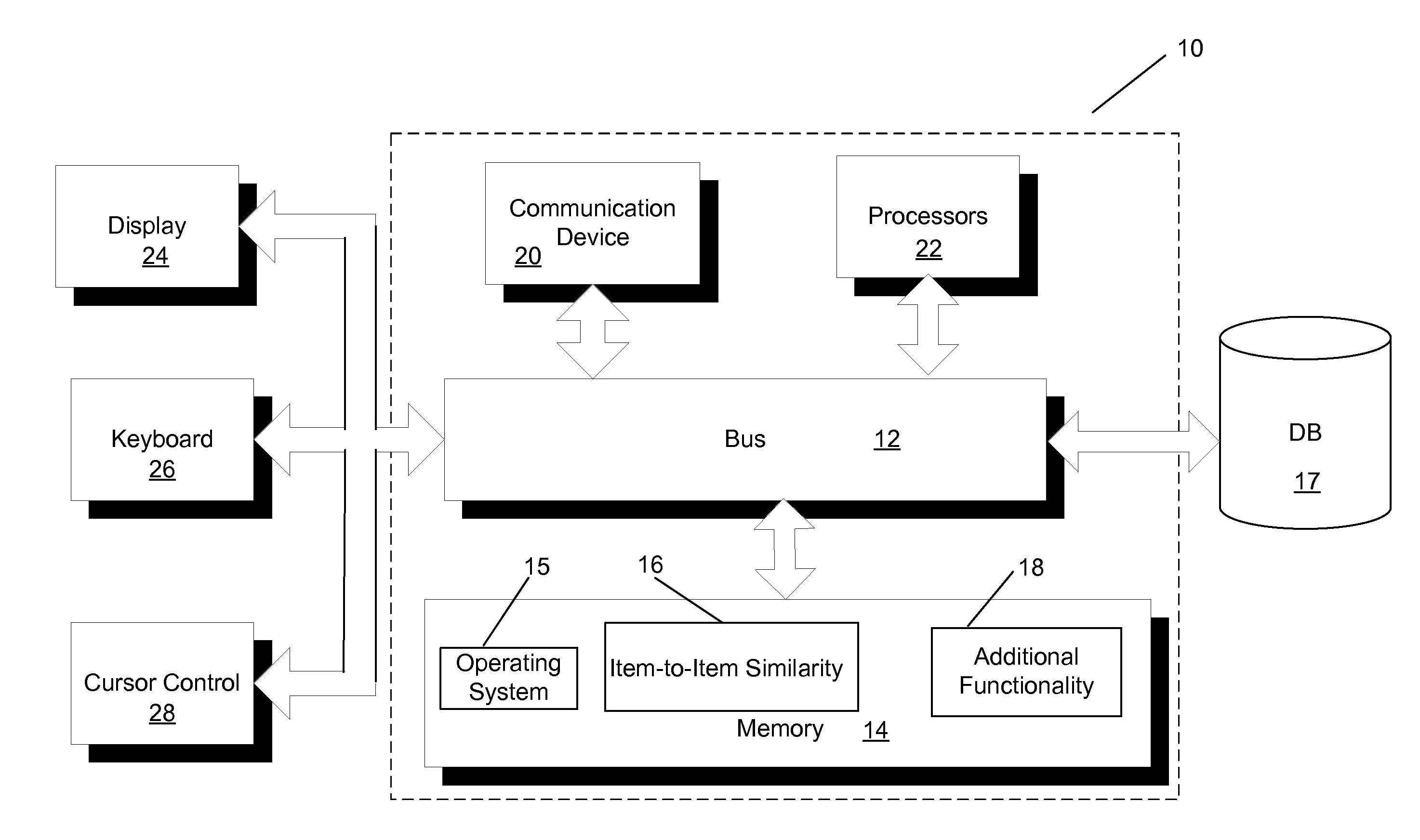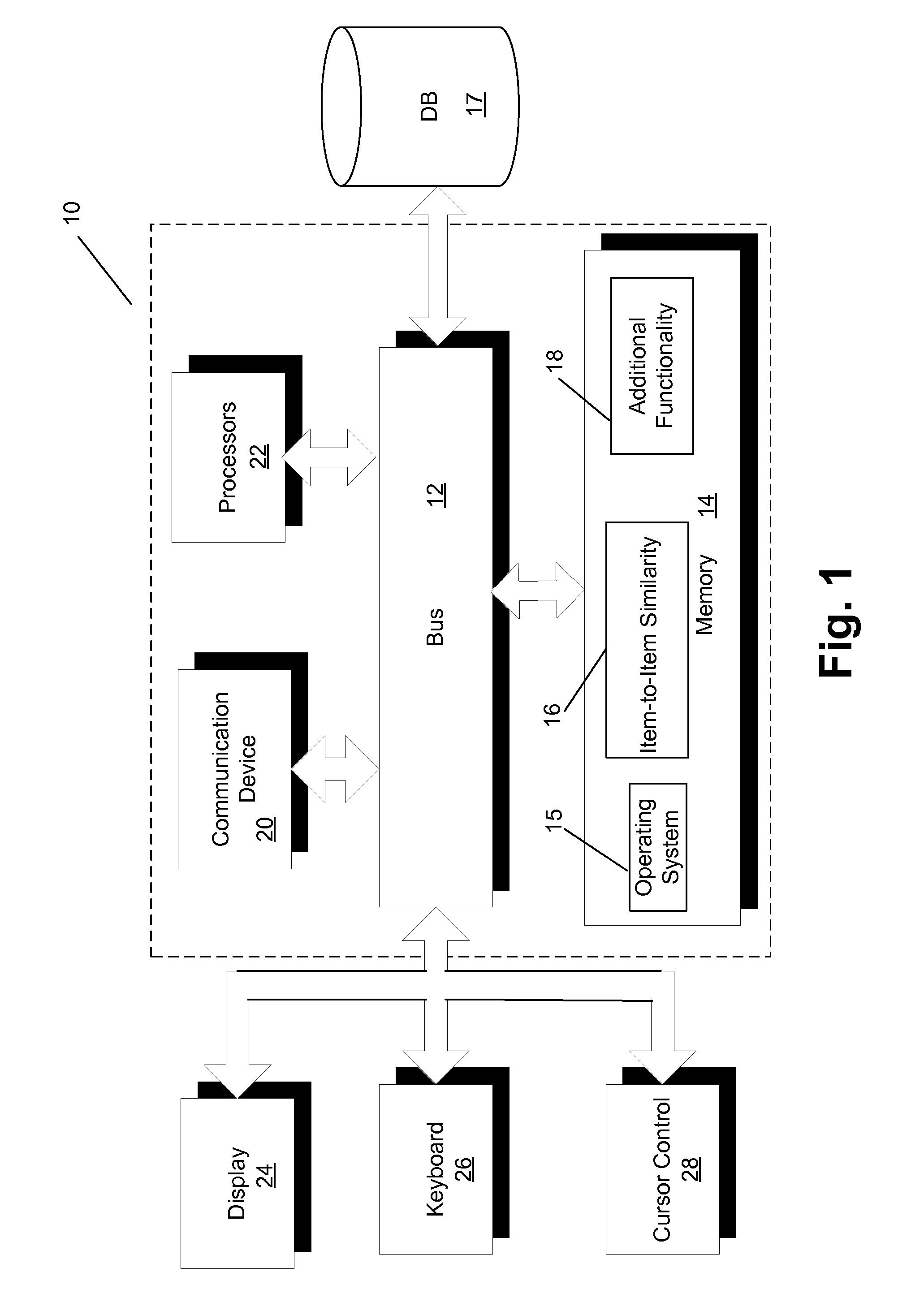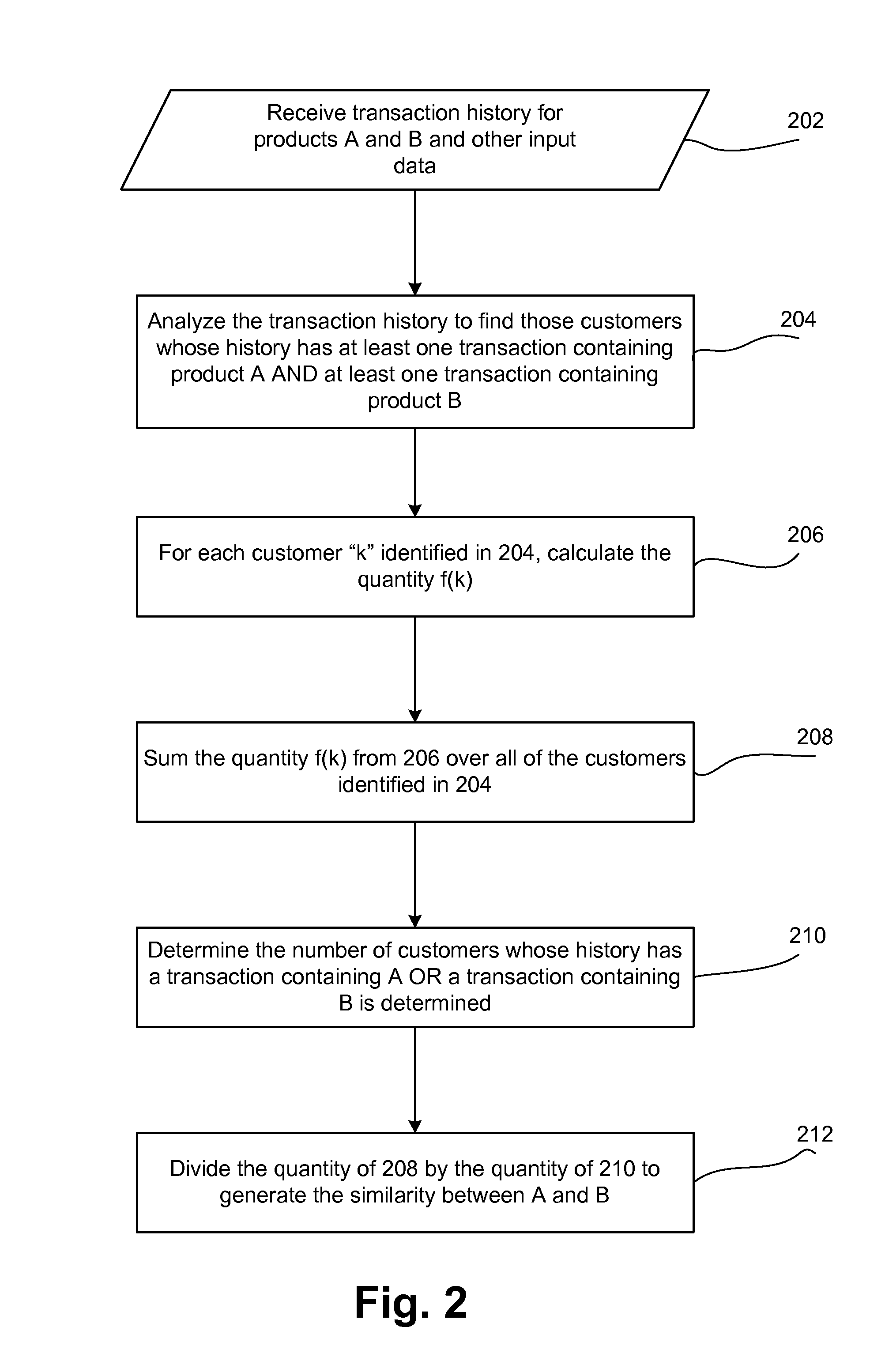Item-to-item similarity generation
a technology of similarity generation and item to item, applied in the field of computer system, can solve the problems of insufficient data generation, low individual customer transaction rate, and inability to model at customer level for many practical applications
- Summary
- Abstract
- Description
- Claims
- Application Information
AI Technical Summary
Benefits of technology
Problems solved by technology
Method used
Image
Examples
case 1
[0068]
[0069]Suppose s is an SKU in N. Find its 5 “most similar” SKUs of E, e1, . . . , e5, using attribute-based similarity. These are the “like items” of s. (Since for SKUs in N only their attribute values are available, attribute-based similarity is used to find the like items.)
[0070]Now suppose e is an SKU of E. Define the similarity between s and e is as follows:
sim(s,e)=∑ei≠esima(s,ei)·sime(ei,e)∑ei≠esima(s,ei)
sima indicates “attribute-based similarity,” while sime indicates similarity from SIM. Therefore, sim(s,e) is really just a weighted average of SIM-based similarities, where the weight is the attribute-based similarity between s and ei. Note that the summations run over ei≠e, because in the case where one of the ei happens to be e itself, it should not be included in the sum.
case 2
[0071]
[0072]This is similar to case 1, as it is again a weighted average. Suppose s and t are two SKUs in N. Find the 5 most similar SKUs e1, . . . , e5 in E to s, and the 5 most similar SKUs f1, . . . , f5 in E to t, again using attribute-based similarity. Now take the weighted average over the indices i, j:
sim(s,t)=∑ei≠fjsima(s,ei)·sime(ei,fj)·sima(fj,t)∑ei≠fjsima(s,ei)·sima(fj,t)
Again, note that the summations are over ei≠fi. This is like case 1, except that the weights come from both s and t. The summations contain at most 25 terms, since there are 5 similarities for s and 5 for t.
[0073]For the like-item similarity embodiment, because the new similarities are derived as weighted averages of similarities in SIM, the new similarities will have magnitudes that are roughly on a par with the ones in SIM. Therefore, the new similarities will not be grossly out of line with the ones already in SIM.
[0074]FIG. 5 is a flow diagram of the functionality of item-to-item similarity module 16 ...
PUM
 Login to View More
Login to View More Abstract
Description
Claims
Application Information
 Login to View More
Login to View More - R&D
- Intellectual Property
- Life Sciences
- Materials
- Tech Scout
- Unparalleled Data Quality
- Higher Quality Content
- 60% Fewer Hallucinations
Browse by: Latest US Patents, China's latest patents, Technical Efficacy Thesaurus, Application Domain, Technology Topic, Popular Technical Reports.
© 2025 PatSnap. All rights reserved.Legal|Privacy policy|Modern Slavery Act Transparency Statement|Sitemap|About US| Contact US: help@patsnap.com



